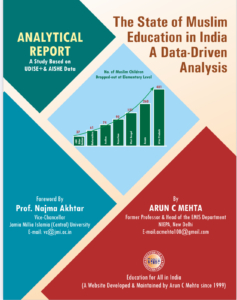India’s Higher Education: A Rising Global Leader
Introduction
India’s higher education system is transforming, positioning the country as an emerging global education hub. With the implementation of the National Education Policy (NEP) 2020, India is redefining its role in the international academic landscape through strategic internationalisation efforts. This article examines India’s evolving higher education system, its global standing, and the challenges and opportunities that lie ahead, drawing insights from a recent article by Prashant Bhalla, President of Manav Rachna Educational Institutions, published on July 22, 2025, in The Economic Times Education.
Key Developments in India’s Higher Education
The NEP 2020 has been pivotal in reshaping India’s higher education framework, emphasizing internationalisation as a core strategy. The policy encourages global universities to establish campuses in India, facilitates credit transfers, and promotes student and faculty mobility. A landmark achievement is the inauguration of the University of Southampton’s campus in India, the first under new regulations, with several other institutions from the US, UK, Australia, and Europe exploring similar opportunities. These developments signal India’s shift from being a source of international students to a destination for global talent.
Indian universities are fostering international collaborations through student and faculty exchanges, joint research, dual-degree programs, and curricula aligned with global benchmarks. These initiatives prepare students for careers both in India and abroad. Additionally, internships with international organizations, guest lectures by global experts, and cross-border projects enrich the academic experience. Regulatory bodies are streamlining visa processes and establishing International Student Offices to make Indian campuses more accessible to international students.
India’s Global Standing in Higher Education
India’s higher education system is gaining prominence globally but still faces challenges competing with established education hubs like the US, UK, and Australia. According to the QS World University Rankings 2025, several Indian institutions, such as the Indian Institute of Science (IISc) Bangalore and Indian Institutes of Technology (IITs) like IIT Bombay and IIT Delhi, rank among the top 200 globally, reflecting academic excellence in specific disciplines. However, India’s overall global share of international students remains modest, with only about 50,000 international students enrolled in Indian institutions as of 2023, compared to over 1 million in the US (UNESCO Institute for Statistics, 2023).
The NEP 2020 aims to bridge this gap by attracting global students through India’s academic distinction, rich cultural heritage, and growing research capabilities. Initiatives like the “Study in India” program have increased international student inflows, particularly from South Asia and Africa. India’s affordability, diverse academic offerings, and advancements in STEM (Science, Technology, Engineering, and Mathematics) make it an attractive destination. Nonetheless, challenges like inadequate infrastructure, inconsistent credit recognition, and competition from established global hubs persist.
Challenges and Opportunities
While India’s higher education sector is on an upward trajectory, it faces hurdles in scaling infrastructure to accommodate international students and ensuring seamless credit transfers. Competing with global education hubs requires sustained investment in academic research, faculty development, and campus facilities. However, India’s strengths—cost-effective education, a vast network of institutions, and a culturally rich environment—provide a strong foundation for growth. The proactive role of policymakers in easing regulations and fostering international partnerships is a promising step toward overcoming these challenges.
Concluding Observations
India’s higher education system is at a pivotal juncture, transitioning from a regional player to a global leader. The NEP 2020 has catalysed this transformation by prioritizing internationalisation, fostering international collaborations, and attracting world-class institutions to India. While challenges remain, India’s academic excellence, cultural diversity, and policy reforms make it a preferred destination for global students and a hub for innovative research. By continuing to scale these efforts with bold ambition and collaboration, India can redefine the international higher education landscape, offering world-class opportunities to students both domestically and internationally.
Suggested Readings
- Bhalla, P. (2025, July 22). India’s higher education isn’t just evolving — It’s leading the global conversation. The Economic Times Education.
- QS World University Rankings 2025.
- UNESCO Institute for Statistics. (2023). Global Flow of Tertiary-Level Students.



